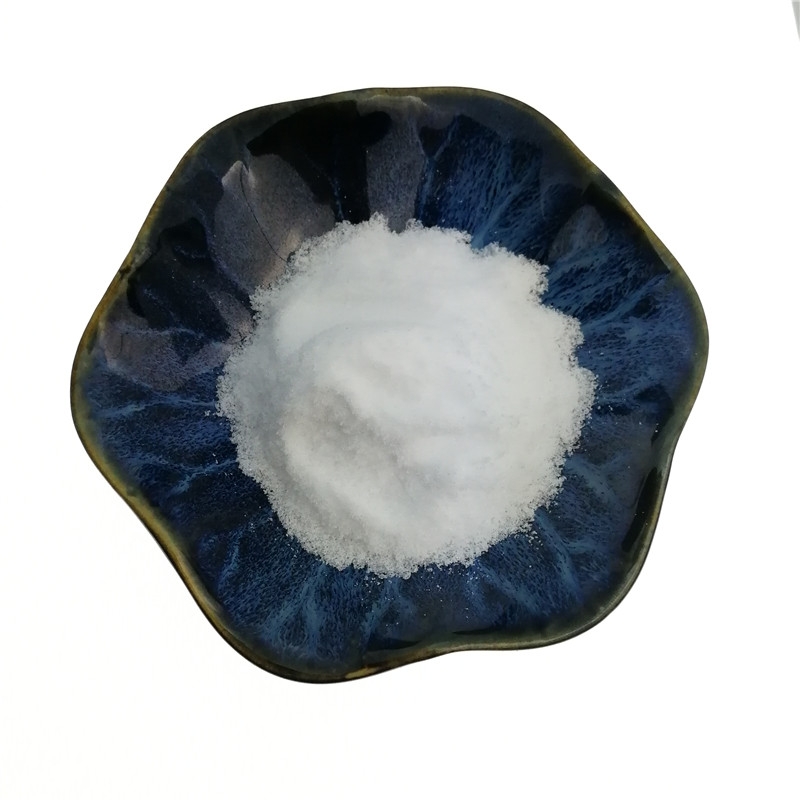"7 to 24 months old infant feeding guide" published!
-
Last Update: 2020-10-23
-
Source: Internet
-
Author: User
Search more information of high quality chemicals, good prices and reliable suppliers, visit
www.echemi.com
the term "7 to 24 months of age" in these guidelines refers to infants and young children between the ages of 6 months (180 days of birth) and 2 years of age (24 months of age).breast milk is still an important source of nutrition for infants and young children between the ages of 7 and 24 months, but single breastfeeding is no longer sufficient to meet their energy and nutrient needs, and other nutrient-rich foods must be introduced. At the same time, the development of digestive organs such as the gastrointestinal tract, perception and cognitive behavior of infants and young children between 7 and 24 months of age also requires the opportunity to gradually experience and adapt to a variety of foods through contact, feeling and attempt, from passive feeding to independent eating. This process begins at the age of 7 months and is completed at the age of 24 months. The particularity of infants and young children in this age group is also that the feeding behavior of parents and feeders has a significant impact on their nutritional and dietary behavior. Feeding according to the needs of infants and young children contributes to the formation of healthy eating habits and has long-term and far-reaching effects.7 to 24 months old infants and young children in the third stage of the 1000-day opportunity window period, suitable nutrition and feeding is not only related to the recent growth and development, but also related to long-term health. In view of the nutritional and feeding needs of infants and young children between 7 and 24 months of age in China, as well as possible problems, based on the available evidence, and with reference to THE and other relevant recommendations, the feeding guidelines for infants and young children between 7 and 24 months of age are put forward.. Recommended Entry:1. Continue breastfeeding and add complementary foods from the age of 6 months.. 2. Start with a mud paste rich in iron and gradually add to achieve a variety of foods.. 3. Promote compliance with feeding and encourage but not force eating.. 4. Complementary foods without condiments to minimize sugar and salt intake.. 5. Focus on dietary hygiene and food safety.. 6. Regular monitoring of physical indicators, the pursuit of healthy growth
.. 1. Continue breastfeeding, add complementary foods from the age of 6 monthsContinue breastfeeding, add complementary foods from 6 months of ageContinued breastfeeding also continues to help promote close relationships between mothers and children and promote infant and young child development. Therefore, infants and young children between 7 and 24 months of age should continue to breastfeed. When breastfeeding is not necessary or breast milk is insufficient, formula is required as a supplement to breast milk.6 months of age, digestive organs such as the gastrointestinal tract have been relatively well developed to digest a variety of foods other than breast milk. At the same time, the baby's oral motor function, taste, smell, touch and other perception, as well as psychological, cognitive and behavioral abilities are ready to accept new food. At this point, the addition of complementary foods can not only meet the nutritional needs of infants, but also meet their psychological needs, and promote the development of their perception, psychology and cognitive and behavioral abilities.Key Recommendations:
1. Infants should continue breastfeeding after they are 6 months of age and gradually introduce a variety of foods.. 2. Complementary food refers to foods with various sexual conditions other than breast milk and/or formula.. 3. When there is a special need, you must adjust the addition time of complementary foods under the guidance of your doctor. . 4. Infants and young children who cannot be breastfed or who do not have enough breast milk should choose formula as a supplement to breast milk. . 2. Starting from iron-rich mud paste food, gradually add to achieve a variety of food 7 to 12 months old infants need energy from about 1/3 to 1/2 from complementary food, 13 to 24 months old children about 1/2 to 2/3 of the energy from complementary food, and breastfed infants from auxiliary food iron up to 99%. Therefore, the baby first added complementary food should be iron-rich high-energy food, such as reinforced iron baby rice flour, mud and so on. On this basis, different kinds of foods are gradually introduced to provide different nutrients. the principle of adding complementary foods: add only one new food at a time, from less to more, from thin to thick, from thin to coarse, step by step. Starting from a kind of iron-rich mud paste food, such as fortified iron baby rice flour, meat mud, etc., gradually increase the variety of food, gradually transition to semi-solid or solid food, such as rotten noodles, mince, crushed vegetables, fruit grains and so on. Each introduction of a new food should be adapted to 2 to 3 days, closely observe whether there is vomiting, diarrhea, rash and other adverse reactions, adapt to one food and then add other new food. key recommendation: 1. Gradually increase the amount of complementary food as the amount of breast milk decreases. . 2. First add reinforced iron baby rice flour, meat mud and other iron-rich mud paste food. . 3. Only one new food is introduced at a time, and food diversification is gradually achieved. . 4. Start with mud paste food and gradually transition to solid food. . 5. Complementary food should be added in the appropriate amount of vegetable oil. . 3. Promote compliance with feeding, encourage but not force eating As infants and young children grow and develop, parents and feeders should, in accordance with changes in their nutritional needs, perception, and cognitive, behavioral and motor development, feed in accordance with the needs of infants and young children, help infants and young children gradually achieve a regular meal pattern consistent with their families, and learn to eat independently and observe the necessary eating etiquette. it is the responsibility of parents and feeders to provide infants and young children with a variety of foods that are appropriate to their level of development, and to be aware of and respond appropriately to the signs of hunger or satiety from infants and young children during feeding. Respect infants' food choices, patiently encourage and assist infants to eat, but never force them to eat. parents and feeders also have the responsibility to create a good dining environment for infants and young children, to maintain a quiet and pleasant dining environment, to avoid television, toys and other interference with the attention of infants and young children. Control each meal for no more than 20 minutes. Parents and feeders should also be good role models for infants and young children. Key Recommendations: 1. Be patient and encourage eating, but never forced feeding. . 2. Encourage and assist infants and young children to eat and cultivate their interest in eating. . 3. Don't watch TV or play with toys when eating, and not more than 20 minutes at a time. . 4. Feeders should have adequate communication with infants and young children at meal time and not use food as a reward or punishment. . Parents should maintain their own good eating habits and become role models for infants and young children. . 4. Complementary foods without condiments, to minimize sugar and salt intake "Feed" complementary foods should be kept original, without salt, sugar and irritating condiments, to maintain a light taste. Light-flavoured foods can help infants and young children's acceptance of different natural food tastes and reduce the risk of partial eating. Light-flavoured foods can also reduce salt and sugar intake in infants and young children and reduce the risk of childhood and adult obesity, diabetes, high blood pressure, and cardiovascular disease. emphasizes that infant supplements do not add salt, sugar and irritating condiments, but also to remind parents to prepare family food should also maintain a light taste, that is, to meet the needs of infants and young children, but also to protect the health of the whole family. "Key Recommendations" 1. Infant supplements should be made separately. . 2. Keep the food original and do not need extra sugar, salt and all kinds of condiments. try a light family meal after the age of 3.1. . 5. Focus on dietary hygiene and eating safety The choose fresh, high-quality, non-polluting food and clean water to make complementary foods. Wash your hands before making complementary foods. Tableware and places for the production of complementary food should be kept clean. Complementary foods should be cooked and cooked through. Complementary foods made should be eaten in a timely manner or properly preserved. Wash your hands before meals to keep your cutlery and dining environment clean and safe. must have adult care when eating to prevent eating accidents. Whole peanuts, tree nuts, jelly and other foods are not suitable for infants and young children. Key Recommendations 1 Choose safe, high-quality, fresh ingredients. . 2. The production process is always clean and hygienic, raw and separate. . 3. Do not eat leftovers, properly store and dispose of surplus food. . 4. Wash your hands before meals, eat with adult care, and pay attention to the safety of the eating environment. . 6. Regular monitoring of physical indicators, the pursuit of healthy growth "Basics" moderate and stable growth is the best growth model. Regular monitoring and evaluation of physical growth indicators in infants and young children between 7 and 24 months of age every 3 months can help to determine their nutritional status, and according to changes in physical growth indicators, timely adjustment of nutrition and feeding. Increased surveillance should be provided for infants and young children with poor growth, overweight obesity, and acute and chronic diseases. Key Recommendations: Weight weight and length are intuitive indicators that reflect the nutritional status of infants and young children. . 2. Every 3 months, regular measurement of body length, weight, head circumference and other physical growth indicators. . 3. Steady growth is the best growth model. . China Residents' Dietary Guidelines Revision Expert Committee (Working Group of Experts on the Revision of Women's and Children's Guidelines) Note: The relevant practice application and development basis can be found in the Professional Edition Contact Box: cns@cnsoc.org Telephone: 010-83554781 .
This article is an English version of an article which is originally in the Chinese language on echemi.com and is provided for information purposes only.
This website makes no representation or warranty of any kind, either expressed or implied, as to the accuracy, completeness ownership or reliability of
the article or any translations thereof. If you have any concerns or complaints relating to the article, please send an email, providing a detailed
description of the concern or complaint, to
service@echemi.com. A staff member will contact you within 5 working days. Once verified, infringing content
will be removed immediately.







